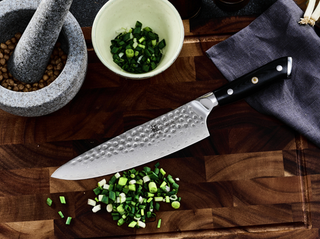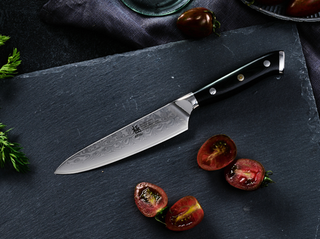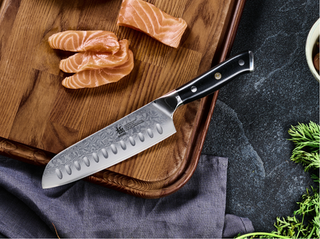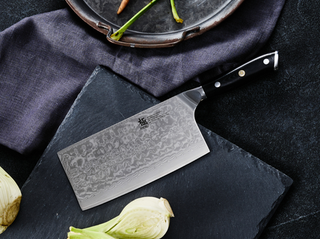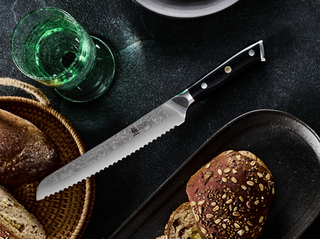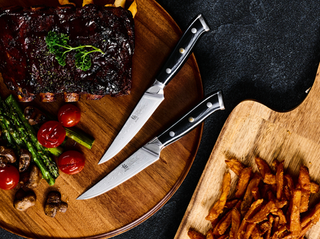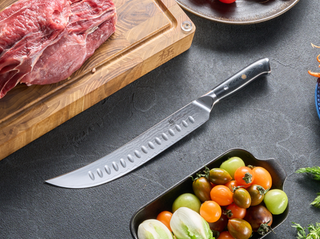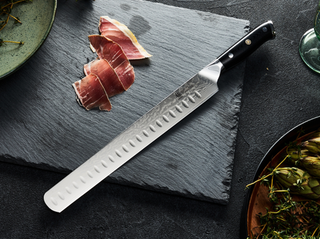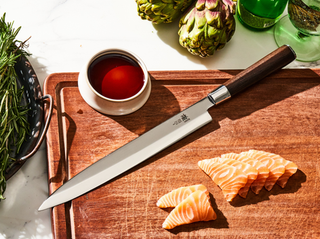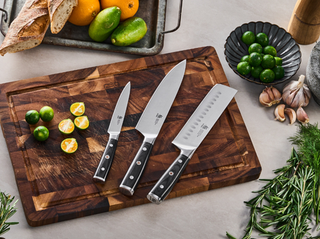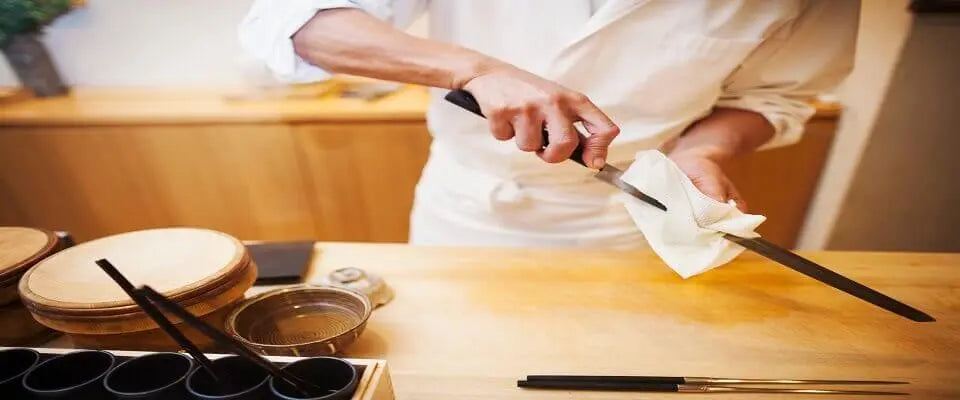"When should I clean and sanitize my knives?" It's a question every home cook and professional chef needs to know the answer to. Proper knife hygiene is essential for keeping your food prep safe and cross-contamination at bay. Whether you're a chopping whiz or just getting started in the kitchen, this article will outline the crucial times knives require cleaning and disinfecting.
As you read further, we will delve into the importance of knife hygiene and the risks associated with neglecting this crucial aspect of food preparation. We will also discuss the factors that influence when a knife should be cleaned and sanitized, such as different food types, handling raw meats, and frequency of use. Understanding these factors will empower you to make informed decisions about knife hygiene in your own kitchen.

Why Knife Cleaning and Sanitizing Are Crucial
Many people are wondering why cleaning and sanitizing knives is so important. In order to make you fully understand that, we have made a list of reasons why cleaning and sanitizing knives is so important.
Prevent Cross-Contamination
Cleaning knives frequently helps prevent bacteria from raw meats, poultry, fish, etc. from spreading to other foods, work surfaces, and utensils. This stops dangerous pathogens that can cause foodborne illness.
Remove Debris
Food debris left on a knife blade can harbor bacteria and eventually corrode the metal over time. Regular cleaning prevents buildup.
Extend Knife's Life
Allowing food residue, juices, and debris to dry on a knife can lead to staining and corrosion. Proper care keeps knives looking and functioning like new.
Improved Cutting Performance
A dirty, dull knife requires more force and tears than one that slices food cleanly. Keeping knives clean improves efficiency and cutting ability.
Avoid Rusting
Moisture and high-salt or acid foods can cause knife blades to rust if left uncleaned. Washing and drying prevent corrosion.
Making knife cleaning a habit is worth the minimal time and effort required. It leads to better performance and longevity and shows a commitment to food safety.
When to Clean and Sanitize Your Knives
After cutting meats
A knife must be cleaned and sanitized after cutting meats to prevent cross-contamination, which is a significant factor in the spread of foodborne illnesses. Raw meats, especially poultry, can harbor harmful bacteria like Salmonella and E. coli. These pathogens can easily be transferred from the meat to the knife and then onto other foods if the knife is used again without proper cleaning. Additionally, residues from the meat can degrade the quality of other foods and alter their taste if not removed. By thoroughly cleaning and sanitizing the knife immediately after use, we ensure a safe and hygienic cooking environment, preserve the integrity and taste of other ingredients, and protect ourselves and others from potential health hazards.
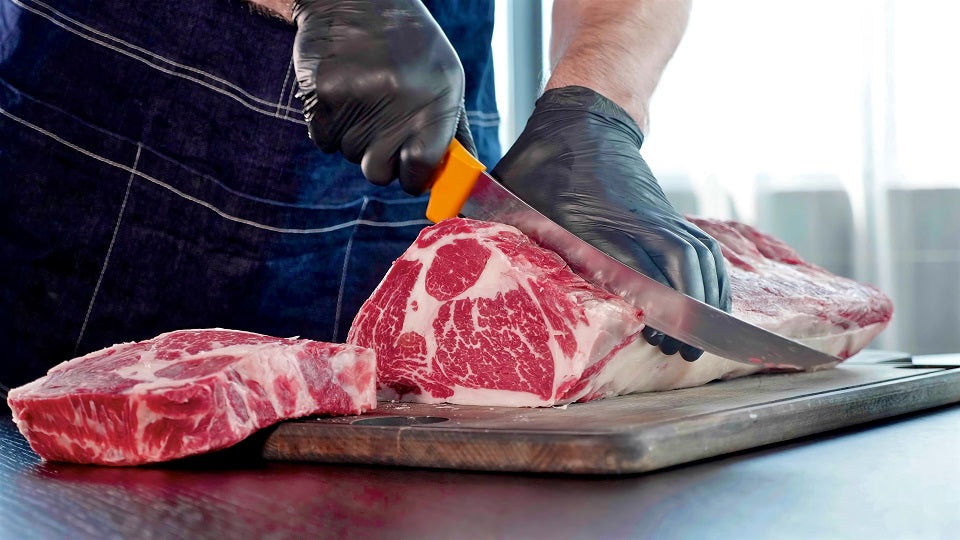
Before storing the knife
Properly cleaning and sanitizing a knife before storage is extremely important for food safety. Knife blades and handles can harbor harmful bacteria, especially after usage with raw meats, fish, poultry, and eggs. Storing a soiled knife allows more time for bacteria to grow and spread to anything else it contacts, like utensil drawers, knife blocks, and other blades. It only takes a tiny amount of contamination to cause serious illness. That’s why all debris, residues, and germs must be removed through thorough washing, rinsing, and sanitizing before the knife is put away. Proper sanitation before storage prevents cross-contamination and gives bacteria no chance to thrive.
Sharing knives with others
When you share a knife with other people, it's important to clean and sanitize it to keep food safe and stop the spread of possible germs. Cross-contamination is more likely to happen when more than one person uses the same knife, especially if different foods are being made. By cleaning and sanitizing the knife before giving it to someone else, you get rid of any leftover food, germs, or allergens. This helps keep harmful microorganisms or allergenic substances from spreading from one person to the next. This lowers the risk of getting sick from food or having an allergic reaction.

Tips on how to clean and sanitize knives properly
Rinse Immediately
After using a knife, rinse it under warm running water to remove any food particles or debris on the blade and handle.
Use Mild Dish Soap
Apply a small amount of mild dish soap directly to the blade and handle of the knife. Gently scrub the entire surface using a soft sponge or brush.
Pay Attention to the Handle
Ensure that you clean not only the blade but also the handle of the knife. Bacteria can accumulate on the handle, so give it a thorough cleaning.
Avoid Harsh Abrasives
Do not use abrasive materials like steel wool or harsh scouring pads, as they can scratch the knife's surface.
Dry Immediately
After rinsing, dry the knife with a clean towel to prevent moisture from promoting bacterial growth and rusting. Pay attention to drying the handle as well.
Sanitize with a Solution
To further sanitize the knife, prepare a sanitizing solution by mixing 1 tablespoon of bleach with 1 gallon of water. Submerge the knife in the solution for a few minutes, then rinse it with clean water and dry it thoroughly.
Store Properly
Once the knife is clean and dry, store it in a knife block, on a magnetic strip, or in a knife sheath to protect the blade and prevent accidents.
Summary
Maintaining proper knife hygiene is a crucial kitchen skill for keeping food safe and avoiding the spread of bacteria. After raw meat touches a blade, thorough cleaning and sanitizing removes potentially harmful pathogens. Before stowing knives away, a complete wash eliminates opportunities for germs to multiply. And sharing cutting tools with others calls for a thorough scrub to prevent passing along unseen germs. Tips like immediate rinsing, mild soap scrubbing, towel drying, and sanitizing solutions all help decontaminate knives.
For knives that retain their edge and shine, KYOKU's Japanese Damascus steel is ideal. The advanced steel means less sharpening is needed, while the ergonomic handle provides a steady, secure grip. Their wider blade design reduces sticking, so prepping is fast and cleaning is easy. With good knife care like handwashing, fully drying, and honing before use, KYOKU knives will maintain their sharpness for years as your kitchen's MVP. Invest in superior knives and practice safe habits for the ultimate cutting experience.
Cleaning and sanitizing knives should be done after every use. This is crucial not only for maintaining the sharpness and longevity of your knives but also to prevent cross-contamination of foods, which can lead to foodborne illnesses.
Keeping knives clean and sanitized is integral to upholding hygiene standards, particularly in food service environments. Knives are frequently used tools in kitchens, and they come into contact with various food types. If not cleaned and sanitized properly, they can harbor harmful bacteria and germs that can detrimentally affect the quality of your food and potentially pose health risks.
Cleaning your knives properly involves washing them with warm, soapy water. Be sure to handle them carefully to avoid injury. Sanitizing, on the other hand, entails killing bacteria and germs that may not be removed by simply washing. It could involve using a sanitizing solution or heat sanitization. Regularly sharpen your knives too; a dull knife poses more risks than a sharp one.
